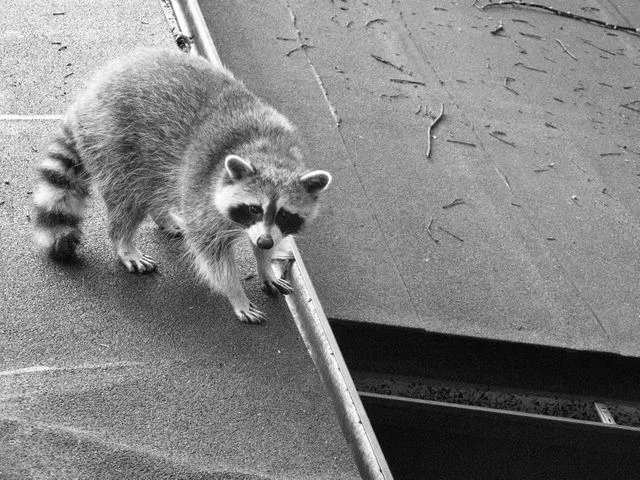NEED TO KNOW
Two California children contracted a rare parasite commonly spread by raccoon feces and occasionally by dogs
The two unrelated kids — a teenager and a toddler — were hospitalized and treated for B. procyonis infections in 2024
The Centers for Disease Control and Prevention (CDC) says people should “avoid contact with raccoons and their feces”
Two children in California contracted a rare parasite that is commonly spread by raccoon feces and occasionally by dogs.
The Centers for Disease Control and Prevention (CDC) detailed two 2024 cases of a B. procyonis infection found in two unrelated children — a 14-year-old boy and a 15-month-old boy — in its latest Morbidity and Mortality Weekly Report, published on Thursday, July 31.
The infection, commonly referred to as raccoon roundworm infection, is caused by the Baylisascaris procyonis roundworm, which is often spread by exposure to raccoon feces and can also be transmitted to dogs in rare cases.
According to the report, the Los Angeles County Department of Public Health (LACDPH) was notified last year of two patients with neurological signs and symptoms — such as behavioral change, lethargy and “gait instability” — consistent with the infection.
Both cases were in the South Bay area of Los Angeles County, according to a LACDPH release from September 2024.

Getty
Raccoon appears on roof of a home in Toronto, Canada
According to the CDC, raccoons can “shed millions of roundworm eggs in their feces every day,” which then become infective after a few weeks and can develop into larvae when consumed by “nondefinitive hosts.”
There have only been 35 cases in humans reported in the U.S., the health organization said.
The teenage boy, who is autistic, had a history of ingesting non-food items and was initially hospitalized in May 2024 due to a series of “behavioral changes,” according to the new information from the CDC.
After “enhancing” lesions were detected in the boy’s brain, doctors discovered and treated what the CDC called “a live parasitic nematode” in his eye. The teen was prescribed medication for a six-week period, before symptoms “subsequently resolved” and he returned to his “baseline neurologic status,” according to the agency.
The second patient, a toddler, was also hospitalized that June, before a brain MRI found “diffuse white matter abnormalities.” Months later, doctors eventually discovered a “live parasitic nematode” in his eye — which, like the older boy, was treated with a laser.
Both boys were also treated with a drug for paramedic worms, albendazole and the anti-inflammatory corticosteroids.
While a source of the infection was not clear for the toddler, the CDC reported that a raccoon latrine — or an area where the animals defecate — was located on the rooftop of the teenager’s home, “directly above the entrance to the premises, allowing feces to roll onto the landing below.”
The child was suspected to have consumed the feces or feces-contaminated soil. Due to the extent that raccoons visit the home, and unsuccessful efforts to move the animal’s latrine, the family is planning on moving, the CDC said.
https://people-app.onelink.me/HNIa/kz7l4cuf
“Given the severity of disease in humans, the high prevalence of B. procyonis infection in raccoons, and the proximity of raccoons to humans and pets, B. procyonis is a substantial public health concern,” the CDC said.
“To prevent infection, the public should avoid contact with raccoons and their feces, not keep raccoons as pets, ensure that children or persons with developmental disabilities do not place contaminated objects or fingers into their mouths, practice good hand hygiene after outdoor activities and safely remove raccoon latrines on properties, paying special attention to flat surfaces such as rooftops, decks, tree stumps, or unsealed attics and other areas where raccoons prefer to defecate,” they continued.
Since dogs can also be infected, the CDC encourages dog owners to prevent their pets from eating raccoon feces and said pets should be treated with a “year-round parasite prevention product.”
Read the original article on People

